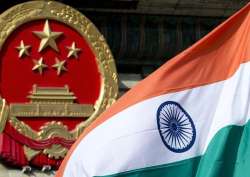As Doklam standoff ends, the significance of September in India-China ties
The longest standoff between the armies of India and China were witnessed in 1987 at the Sumdorong Chu valley in Arunachal Pradesh.

September has begun on a good note for India-China relations. Both sides have managed to resolve the longstanding Doklam standoff without firing a single bullet. Significantly, the resolution to the over 70-day standoff has come just days ahead of the PM Narendra Modi’s China visit for the annual BRICS Summit.
Few would know that September holds great significance for Indo-Chinese relations.
This is not the first time the Indian and Chinese armies came face to face along the border. The longest standoff between the two armies was witnessed in 1987 at the Sumdorong Chu valley in Arunachal Pradesh.
The standoff was followed by the historic visit of then Prime Minister Rajiv Gandhi to Beijing in December 1988.
India’s strong position at Sumdorong Chu resulted in far-reaching gains for India and paved the way for future agreements between the two countries.
After years of negotiations and diplomatic efforts, on September 7, 1993, under the then Narsimha Rao government, India and China signed the ‘Agreement on the Maintenance of Peace and Tranquillity along the Line of Actual Control in the India-China Border Areas’.
This agreement laid the foundation for future negotiations and talks on the Line of Actual Control. The two sides agreed that the boundary question shall be resolved through peaceful and friendly consultations and neither side shall use or threaten to use force against the other by any means.
Since 1993, India and China resolved all border issues through consultations in accordance with this very agreement. PM Modi’s upcoming visit to China will mark 24 years of the signing of this agreement.
There may be hiccups here and there but India and China have so far managed to resolve disputes amicably. Even in the case of Doklam, India’s diplomatic measures are what have yielded favourable results for the Modi government.
On the sidelines of G-20 meet in Germany, Modi and Xi met and agreed to find a peaceful resolution to the Doklam crisis. Indian NSA Ajit Doval then visited Beijing followed by subsequent efforts by the MEA that eventually resulted in the withdrawal of troops.
Of course, tensions still exist.
China claims that India pulling back its troops as its victory. On the other hand, experts back home see this as a diplomatic win for India. India’s demand all through had been maintaining status quo at the disputed territory of Doklam and stopping china from building a road there.
For China, time appeared to be running out fast. International support was growing in India's favour and with the BRICS Summit approaching fast, China agreed to resolve the standoff and end the impasse to save itself from a possible loss of face. China also agreed to hold road construction, at least for the time being.
While skirmishes between the two economic powerhouses are not new, one may wonder how India has always sort out issues with China in a more peaceful manner unlike its other neighbour Pakistan.
The reason behind it is common interest. India and China have common economic interests and both cannot afford war. Take the recent example of Ladakh, where at the Pengong lake on August 15, Indian and Chinese troops reportedly pelted stones at each other.
The situation was tense on eastern border at Doklam but both countries showed restraint. On August 16 at Chushul, Indian and Chinese officers held a meeting and agreed to have peace at the Ladakh border.
It is at tense situations like these that agreements like 1993 pave the way for talks and peace.
On the other hand, it was important for President Xi Jinping to resolve the Doklam issue. Going by past precedence, it could jeopardise PM Modi’s visit to China.
India had shown its discomfort in matters related to security and integrity when it refused to participate in the OBOR summit because China made the CPEC a part of the OBOR despite India’s objection. CPEC covers part of PoK which India considers its territory.
China feared that Modi might take a similar stand on the issue of Doklam and that wouldn’t go down well with President Xi. Failure of the BRICS summit would have made a huge dent on the stature of President Xi who is projecting himself as a world leader.
As neighbours, India and China share more than 4000 km long border with major disputes. But we must appreciate leaders of both the countries who always find ways to resolve disputes through talks and respect peace agreements.